March 17, 2016 – Volume 18 Issue 1: Sustainability Snapshots
In This Issue
Flanigan’s Eco-Logic
The State of Solar: 2015 – 2016
NEM 2.0 California Style
Lithium-ion and Hybrid-Electric Buildings
Energy Storage & Frequency Control
“Exascale” Wind Turbines
Norway’s Billion-Dollar Bicycle Plan
Jay Baldwin Joins EcoMotion
EcoMotion Hiring in California
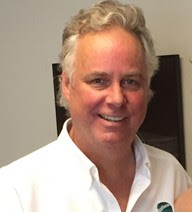
Flanigan’s Eco-Logic: Sustainability Snapshots
In “the fishbowl” at the Cambridge Innovation Center we are, an unusually visible conference room wedged between the busy registration tables and the even busier free-bar at the Venture Cafe. Every Thursday, members of the CIC and their guests convene at the Venture Café to network, inspire, commiserate, and find synergies.
Facilitated by EcoMotion, each month the Sustainability Collaborative meets at the Venture Café and despite the background sounds of a large and lightly lubricated group of networkers, focuses astutely on topics of note. This evening it was all about “Food Rescue.”
We hear from a most enthusiastic worker from “Food for Free,” a Cambridge-based non-profit. Ross Richmond’s niche is new and bold, building on the reuse of outdated super-market food stock. Food rescue, he explains, now includes prepared foods. Food for Free rescues excess prepared food from Whole Foods “hot-bars” and Harvard University Dining Halls. Later I learn about “Ugly Fruits,” another food rescue operation that sees, collects, and distributes the nutritional value of blemished fruits and vegetables. These groups are protected from liability – absent gross negligence — from the Good Samaritan Act of 1996.
Participating sources bag unused, warm food, and then freeze it. The frozen bags are picked up by Food for Free, taken to an infrequently used church kitchen in Harvard Square, where each frozen item is pulverized and then sorted into three-parts, frozen dinners made up of protein, vegetable, and starch. Unlike soup kitchens that serve up a single meal for each participant, Food for Free recipients pick up food for multiple meals.
…The setting is the University of California at Riverside. I tuck my Prius under one of the massive solar ports to moderate a panel on Community Solar. Our panel includes Southern California Edison’s new Community Solar program manager, a rep from First Solar, another from SolarCity, and an environmental justice advocate whose stories about toxins running through her neighborhoods are unbelievable and memorable… her kids playing in gutters and creating froth beards with unknown hazardous substances.
We delve into community solar, a means for power users without rooftops to buy green power. The first community solar project was in Ellensberg, Washington in 2008. Now there are 25 states with community solar projects on-line. There are a total of 91 projects community solar projects and 102 cumulative megawatts installed through early 2016. Four states — California, Colorado, Massachusetts and Minnesota — are expected to install the majority of community solar over the next two years.
Mandated three years ago in SB 43, California’s utilities are about to launch community solar programs. Edison’s program has two facets: The first part – the Green Tariff Shared Renewables Program (known as “the Green Rate”) — allows ratepayers to opt in to solar and to pay a premium for 100% GreenE certified green power. The second part – known as the Enhanced Community Renewables Program — will be administered by select vendors that win bids for projects ranging from 500 kW to 3 MW. When selected in the coming months, these third party providers will recruit and aggregate program participants in long-term power purchase contracts, and then manage community solar participants and their shares.
…Off to Downey and The Gas Company’s Energy Resource Center. Seth Jacobsen and I are speaking on behalf of our school district client, Garden Grove Unified School District, on our Zero Net Energy (ZNE) Pilot program. Briefings prior to our case study make clear that ZNE still suffers from definition. Must renewables that provide the balance of power be site-based or can they be source-based? The latter allows for utility RPS standards, green pricing programs, community solar.
Most basically, a ZNE building produces as much energy as it consumes over the course of a year. These buildings achieve ZNE first through high levels of energy efficiency, and then through the addition of onsite renewable power generation. Whatever the definition, ZNE is alive and growing greatly. The New Buildings Institute maintains a database on ZNE buildings. Currently there are 225 buildings listed, representing 4/5th of the states in the country. Not Surprisingly, California is leading the market.
…Terry and I stand on the Gold Line platform at Lincoln Heights. This is my idea of a Sunday outing. As the train approaches we see the reality… this train is jam-packed full of rail enthusiasts. We are not the only ones riding the new rails, celebrating the 11.5-mile Gold Line extension. Free ridership of the line means the masses are out! Darn. We squeeze in; it’s very uncomfortable. At each station stop more people press in. I’m privately thinking Uber and escape!
From Pasadena east, we’re riding the new rails. At Sierra Madre the line is in the median of the 210 Freeway. Then it vaults the freeway, following the roadbed of the Atchison, Topeka, and Santa Fe railway. There are celebrations at every new station… speeches, food, and music. This $810 million line is an accomplishment of major proportion, complete with a 27-acre maintenance facility in Monrovia that houses 84 “vehicles.”
Funded by the $40 billion Measure R, Metro is on a roll. Currently, three new rail lines are under construction. Yes, it will be possible to get to Santa Monica by train in June of this year! And soon Los Angeles voters will be asked to dig into their pockets again, to support an additional $120 billion bond initiative informally known as Measure R2. It will add more rational transit infrastructure, including “active transportation” amenities (biking and walking) and infrastructure to support efficient cargo handling at the Ports of Los Angeles and Long Beach, the region’s greatest source of emissions.

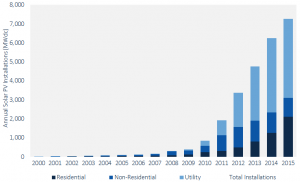
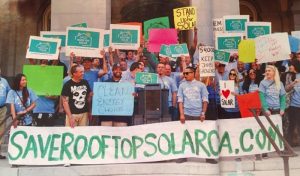
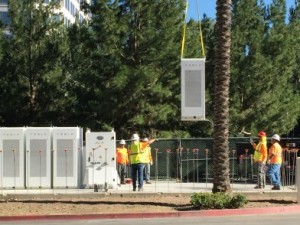
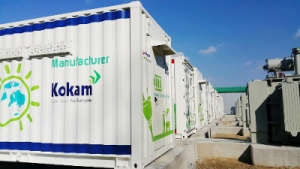

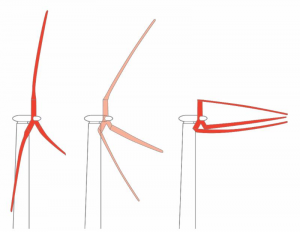 Their proponents claim that the new machines will be designed to harness the fiercest of winds on Earth, “to channel the power of hurricanes.” To do so they will include “bio-inspired elements” such as segmented trunks that bend in high breezes like a palm tree, and segmented morphing rotors that are able to shut down blades through a folding mechanism.
Their proponents claim that the new machines will be designed to harness the fiercest of winds on Earth, “to channel the power of hurricanes.” To do so they will include “bio-inspired elements” such as segmented trunks that bend in high breezes like a palm tree, and segmented morphing rotors that are able to shut down blades through a folding mechanism.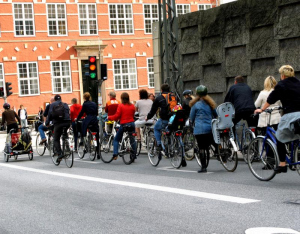
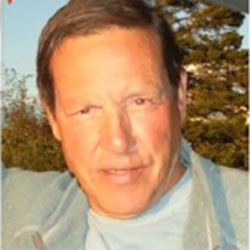 EcoMotion is pleased to announce that Jay Baldwin has joined our team as Business Development Director. A colleague of EcoMotion’s Campus Services for five years, Jay and his wife have recently moved to Los Angeles from Cambridge, Massachusetts.
EcoMotion is pleased to announce that Jay Baldwin has joined our team as Business Development Director. A colleague of EcoMotion’s Campus Services for five years, Jay and his wife have recently moved to Los Angeles from Cambridge, Massachusetts.